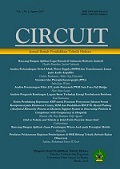Design of Expert System for Early Identification for Suspect Bullying On Vocational Students by Using Dempster Shafer Theory
DOI:
https://doi.org/10.22373/crc.v3i1.4691Keywords:
Bullying on Teenager, Dempster-Shafer, Foward ChainingAbstract
Bullying is negatif agresif character to cover and hurt someone physically or physicology continoustly to act hard to other people who is lower than him. Some parents ignore this problem because of unknowing about the result of this problem that give negative effect to their children and other people. This system will identificate early the begining bullying character for teenager by knowing the kinds of the bullying character base on rate of presentation of higest quartel who has bullying character. This system designed by using Dempster-hafer teory to know the begining of bullying character by using basic knowledge and forward chaining technic to know more about basic knowledge. Counting of this metodh by combining some symptoms that happen on children by calculating the possibillity disturbing by rating the symptoms from 0 to 1. Implementation of this system use PHP program and My SQL database. The black box trial on the consultation modul is done by using 12 instruments of tria and found error value 0,88 % on the system and result of the trial expert system have suitable accuration 84 % , so we can conclude that this expert system for early identification for suspect bullying on teenager good for use.
Downloads
Published
Issue
Section
License
Authors who publish in CIRCUIT: Jurnal Ilmiah Pendidikan Teknik Elektro agree to the following terms:
- Authors retain copyright and grant the journal right of first publication with the work licensed under a Creative Commons Attribution-ShareAlike 4.0 International License (CC BY-SA 4.0) that allows others to share and adapt the work with an acknowledgement of the authorship and initial publication in this journal
- Authors are able to enter into separate, additional contractual arrangements for the non-exclusive distribution of the journal's published version of the work (e.g., post it to an institutional repository or publish it in a book), with an acknowledgment of its initial publication in this journal.
- Authors are permitted and encouraged to post their work online (e.g., in institutional repositories or on their website) prior to and during the submission process, as it can lead to productive exchanges, as well as earlier and greater citation of published work. (See The Effect of Open Acces)

